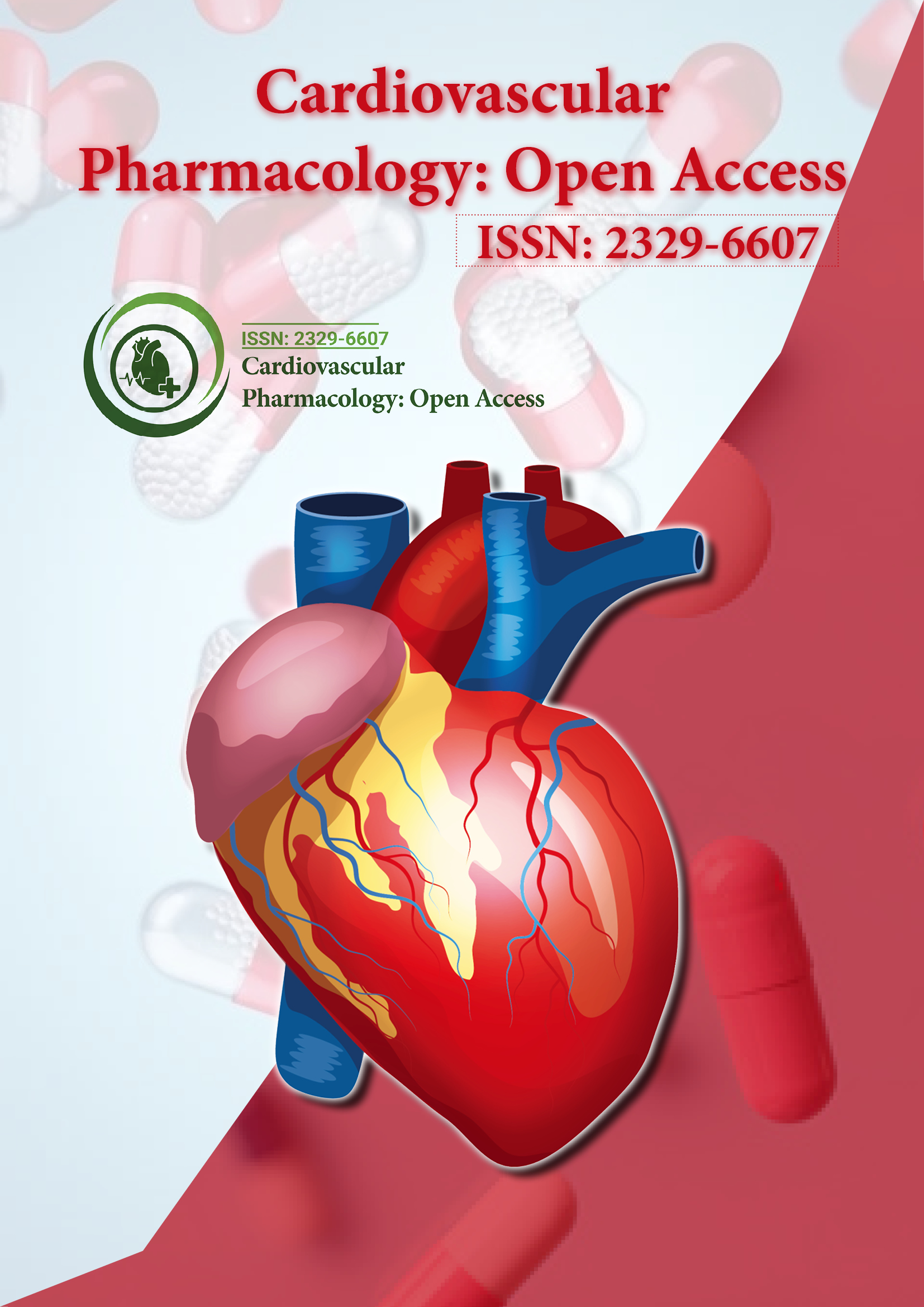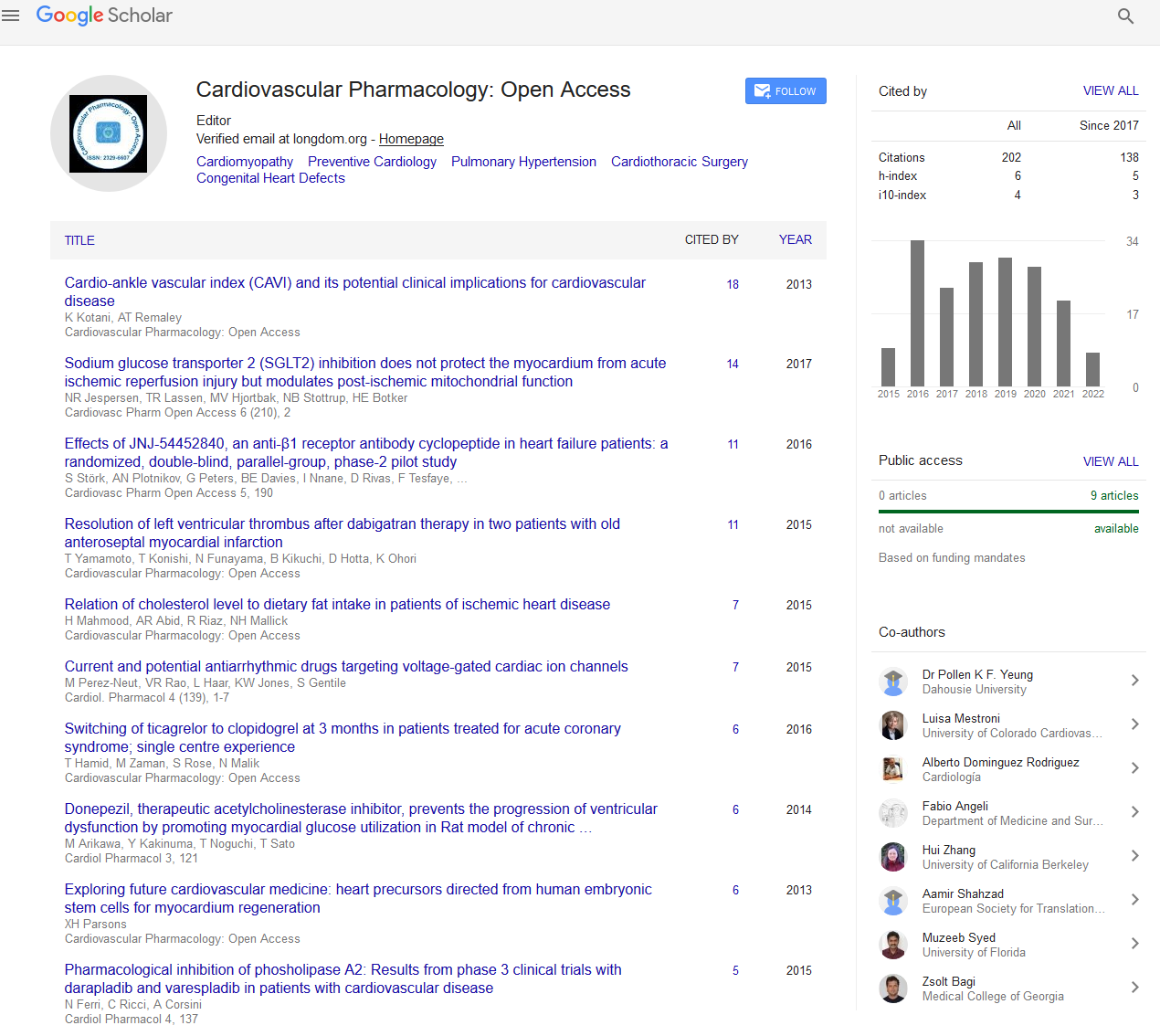Indexed In
- Open J Gate
- Cosmos IF
- RefSeek
- Hamdard University
- EBSCO A-Z
- OCLC- WorldCat
- Publons
- Geneva Foundation for Medical Education and Research
- Euro Pub
- Google Scholar
Useful Links
Share This Page
Journal Flyer

Open Access Journals
- Agri and Aquaculture
- Biochemistry
- Bioinformatics & Systems Biology
- Business & Management
- Chemistry
- Clinical Sciences
- Engineering
- Food & Nutrition
- General Science
- Genetics & Molecular Biology
- Immunology & Microbiology
- Medical Sciences
- Neuroscience & Psychology
- Nursing & Health Care
- Pharmaceutical Sciences
Perspective - (2022) Volume 11, Issue 12
Characteristics of Heart Failure with Reduced and Preserved Ejection Fraction
Barry Marria*Received: 04-Nov-2022, Manuscript No. CPO-22-19365; Editor assigned: 07-Nov-2022, Pre QC No. CPO-22-19365 (PQ); Reviewed: 21-Nov-2022, QC No. CPO-22-19365; Revised: 29-Nov-2022, Manuscript No. CPO-22-19365 (R); Published: 07-Dec-2022, DOI: 10.35248/2329-6607.22.11.318
Description
Compared to those for heart failure with a reduced ejection fraction, pharmacologic clinical trials for heart failure with a preserved ejection fraction have largely failed. It is unknown if variations in the genetic foundations of these important heart failure subtypes can shed light on the discrepancies in clinical trial results. We conduct in-depth genetic analyses of the two heart failure sub-types using a large, uniformly phenotype single cohort of heart failure that has been divided into heart failure with reduced and preserved ejection fractions based on current clinical definitions. Between heart failure with reduced and preserved ejection fraction, we discover different genetic architectures and distinctive genetic association profiles, pointing to different underlying pathobiology.
Despite similar sample sizes, the modest genetic findings for heart failure with preserved ejection fraction compared to heart failure with reduced ejection fraction suggest that clinically defined heart failure with preserved ejection fraction most likely combines a number of unique pathobiological entities. To better understand the underlying genetic signals and contributors to this extremely common condition, consensus sub-phenotyping of heart failure with preserved ejection fraction must be developed. 6.2 million Adults in the United States and 64 million people worldwide suffer from heart failure. Although significant therapeutic advancements have decreased the morbidity and mortality associated with heart failure with a reduced ejection fraction, there is still a sizable residual risk of unfavourable outcomes.
Heart failure with preserved ejection fraction, which makes up about half of all cases of HF, has few therapeutic options, and extensive clinical trials have largely failed to show any clear advantages. Drugs that have slowed down myocardial remodelling and decreased negative outcomes in HFrEF have not shown a similar benefit in HFpEF. Promising methods to comprehend the pathobiology of HFrEF and HFpEF are genomic analyses of large cohorts. There are several genomic loci connected to unclassified HF, according to a recent GWAS meta-analysis of multiple cohorts of European ancestry, but there are no comparable genomic studies concentrating on HFrEF and HFpEF.
A sizable bio bank connected to extensive national Veterans Affairs electronic health record databases is known as the Million Veteran Program. We thoroughly investigated the genetic architecture of each HF subtype in a single large cohort in the MVP using algorithms created to curate HFrEF and HFpEF phenotypes in the national VA databases based on current consensus definitions. Our results highlight the marked heterogeneity of the HFpEF phenotype and the urgent need to create consensus approaches to subphenotype HFpEF in order to enable pathophysiological and therapeutic discovery, in addition to showing the divergent genetic underpinnings of HFrEF and HFpEF. 258,943 controls, cases of unclassified HF, HFpEF, and HFrEF from the MVP cohort, 8227 cases of HF, and 379,788 controls from the UK Bio bank cohort, all of European genetic ancestry, made up the main study population for the GWAS. The MVP non-Hispanic African Americans and the HERMES consortium's recent HF GWAS in Europeans were then examined for genome-wide significant associations of unclassified HF, HFrEF, and HFpEF. Both the HF and MVP control cohorts were mainly made up of men. The HF cohorts in both MVP and the UK Bio bank tended to be older and had more comorbidities and cardio metabolic risk factors than the control populations.
Citation: Marria B (2022) Characteristics of Heart Failure with Reduced and Preserved Ejection Fraction. Cardiovasc Pharm. 11:318.
Copyright: © 2022 Marria B. This is an open access article distributed under the terms of the Creative Commons Attribution License, which permits unrestricted use, distribution, and reproduction in any medium, provided the original author and source are credited.


